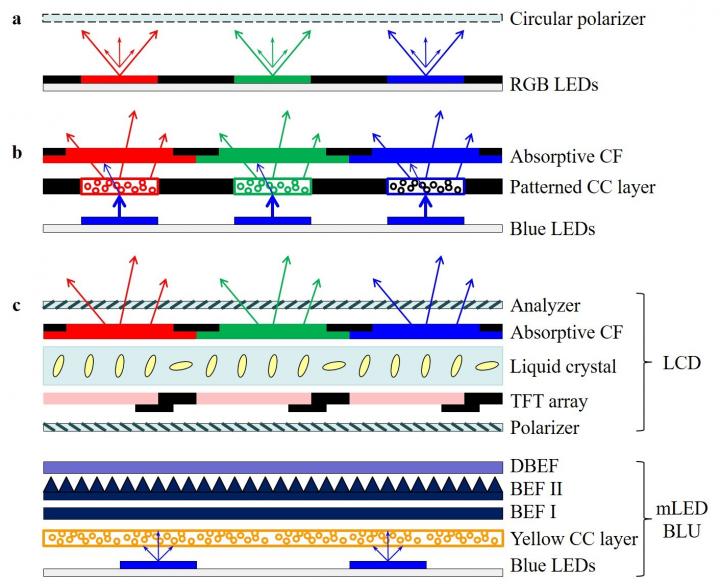Publisher:Administrator Date: 2020-08-17
A research team led by Shin-Tson Wu, Professor from the College of Optics and Photonics, University of Central Florida, USA, conducted a comprehensive analysis on the current display technologies: LCD, OLED, Mini LED and Micro LED. The researchers analyze the performance of self-emitting Mini LED, Micro LED and OLED display, as well as Mini LED backlit LCD, evaluating the power consumption and ambient contrast ratio of each display in depth and systematically compared the dynamic range, motion picture response time, color gamut, and adaptability to flexible and transparent displays.
This team indicated that each display technology has its strengths and challenges. Conventional LCDs have long lifetime and low cost, but their contrast ratio and flexibility are limited. OLED displays offer unprecedented dark state and ultrathin profile, but their lifetime and burn-in issues remain to be overcome. Mini LED and Micro LED displays are promising to provide high luminance, long lifetime and compatibility to flexible and transparent displays, but the chip size effect leads the performance on high-resolution-density AR and VR displays to a question, not to mention the low manufacturing yield and high cost.
These researchers aim to understand the fundamental limits and develop new approaches for each technology to overcome its obstacles. They have also been devoting to discovering new materials and devices.
They highlighted several important performance metrics: (1) a high dynamic range and a high ambient contrast ratio, (2) high resolution or high ppi to minimize the screen-door effect, (3) a wide color gamut, (4) a wide viewing angle and an unnoticeable angular color shift, (5) a fast motion picture response time to suppress image blur, (6) low power consumption, which is particularly important for battery-powered mobile displays, (7) a thin profile, freeform, and lightweight system, and (8) low cost.

(Image: Yuge Huang, En-Lin Hsiang, Ming-Yang Deng and Shin-Tson Wu)
The investigations done by the team unveiled that all of these display technologies support superior performance in the abovementioned criteria except for several trade-offs. To achieve high luminance for HDR, Mini LED backlit LCDs require careful thermal management, and OLED displays would compromise the lifetime. Meanwhile, transparent display is not the best stage for non-emissive LCDs. The power efficiency and ambient contrast ratio depend on the chip size of Mini LED, Micro LED and OLED. Finally, for reaching the same ambient contrast ratio, Mini LED backlit LCDs require a comparable power consumption with OLED displays, while the polarizer-free Mini LED and Micro LED emissive displays could be three times more efficient.
"In the upcoming years, OLED would continue to grow in smartphone market, while Mini LED backlit LCD would penetrate into tablets, gaming monitors, computers, and TVs, as the technology gradually matures. In the not-too-distant future, Mini LED and Micro LED emissive displays could gradually move toward the central stage as their cost becomes more acceptable," the scientists forecasted.
The analysis was published in Light: Science & Application, titled “Mini-LED, Micro-LED and OLED displays: present status and future perspectives.”
Do not miss the opportunity to learn more about the emerging display technologies Mini LED and Micro LED! 2020 Micro LED Forum registration is now opened. Global experts are going to share their insights of the market and the latest progresses of the technologies. Register now to get the limited early bird discount.